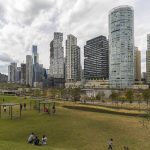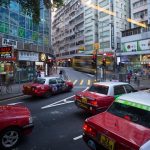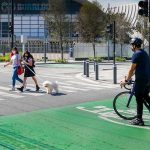
By 2030, cities will house approximately 60% of the world’s population and already more than one in three urban dwellers lack access to at least one core service like reliable energy, clean water or affordable housing. Green, sustainable infrastructure, including ...


During Caroline Owala’s childhood, flooding during rainstorms was a normal occurrence. “When it rained, it would be very difficult for us to even sleep because the flooding would get into the houses,” she told WRI. Caroline grew up in Kibera, ...


To avoid the worst impacts of climate change and realize the goals of the Paris Agreement, greenhouse gas emissions should fall to net zero by mid-century and then reach net negative emissions thereafter. Responding to the science, 60 countries, as ...


The allure of electric vehicles (EVs) has never been stronger. EVs have zero tailpipe emissions, offer lower operating costs than conventional gasoline-powered vehicles and now come in a range of sleek models. With the tailwind of private sector initiatives such ...


As the COVID-19 pandemic has altered urban landscapes and pushed many people toward active mobility, there’s increased urgency to make roads safer for walking and cycling. Many cities are now tasked with protecting more vulnerable users in addition to creating ...


In densely urbanized Hong Kong, transport is the second largest source of greenhouse gas emissions, at 18%. Vehicle traffic is also a major source of toxic air pollutants like NOx, volatile organic compounds and carbon monoxide, accounting for 18%, 21% ...


Monterrey, like other major Mexican cities, rapidly expanded outward during the end of the 20th century. New policies favored investment in new suburban neighborhoods, attracting residents and businesses to the periphery, and provoking several decades of insecurity and population decline. ...


The circular economy turns linear supply chains into loops so that nothing is wasted. Ideally, there is no more end of the line like a landfill. Practitioners look at all the options across supply chains to use as few resources ...


During the summers, in the crowded informal settlement she calls home in Ahmedabad, India, Meenaben would lay wet jute on the floor and hay on the roof of her home to lower the temperature inside. If she didn’t, her home ...


The past year has been all about protecting ourselves and our children from a serious respiratory illness: COVID-19. But as schools reopen and children return to in-person classrooms, many kids will spend part of every day in a toxic environment that causes harm to ...

Page 23 of 337« First...1020...222324...3040...Last »